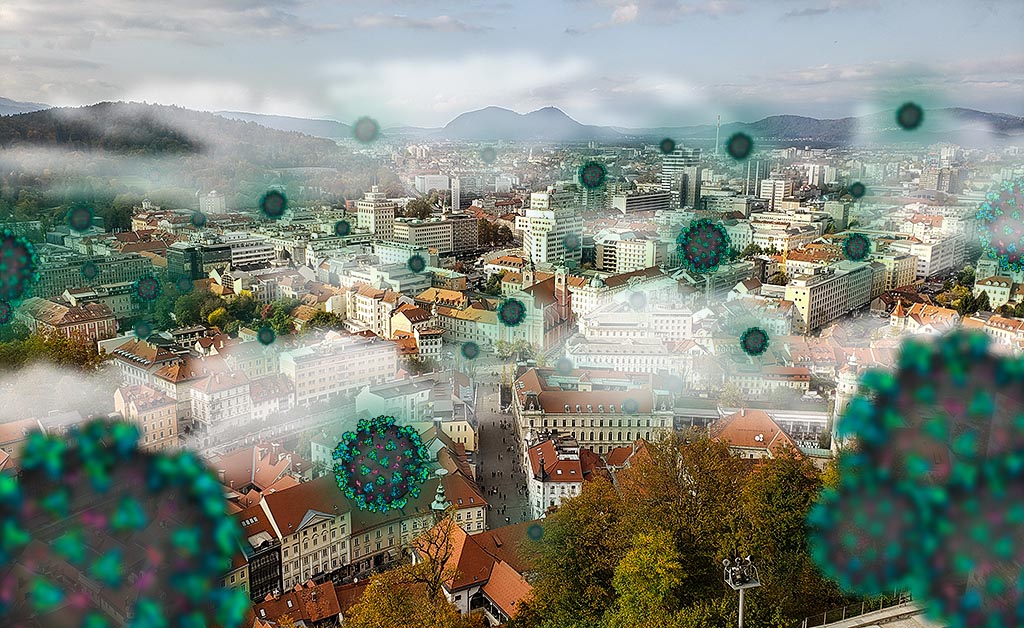By: UKOM
Yesterday’s press conference on the current COVID-19 situation was attended by Tjaša Žohar Čretnik, the Director of the National Laboratory for Health, the Environment and Food, and Leon Cizelj from the Jožef Stefan Institute.
On Wednesday, 5,622 PCR tests were performed and 1,335 cases were confirmed. The share of positive tests was thus 23.7%. Five hundred eighteen patients are hospitalised (18 more than yesterday), and 108 need intensive care. Seven persons died. The seven-day average of confirmed cases has increased from 996 to 1022.
The following municipalities stand out in terms of positive cases confirmed yesterday: Celje (85), Domžale (21), Kamnik (20), Grosuplje (26), Jesenice (27), Kranj (40), Koper (37), Nova Gorica (33), Novo mesto (32), Ljubljana (187), and Maribor (55).
The UK variant represents almost half of all positive tests
Up to the present, the National Laboratory of Health, the Environment and Food has confirmed 745 cases of the UK variant (B 1.1.7) (up from 405 since the last measurement period), three cases of the South African variant (B.1.351), with the sole case of the Brazil variant (P.1) remaining a sample from week 8 of this year, said Ms Žohar Čretnik. Four hundred ninety-one cases of the UK variant were confirmed using direct sequencing, while 254 cases were discovered with pre-screening tests and later confirmed with the sequencing method. As of today, 4,263 coronavirus samples have been analysed and 40 different SARS-CoV-2 variants have been discovered.
Three hundred forty cases of the UK variant were confirmed in the week between 14 and 22 March. The B.1.258.17 variant is still the most prevalent among all discovered variants at 54.7%, while the UK variant represents 41.7% of all analysed variants.
The National Laboratory of Health, the Environment and Food has also discovered a new mutation, designated by the number 501, which is also present in the UK, Brazil and South African variants. An important characteristic of this mutation is that it is able to bind more tightly to human cells, thus making it more probable that the person will get sick.
Measures adopted to prevent health system overload
Of the 1,335 COVID-19 cases confirmed yesterday, around 80 people will be hospitalised and 20 placed in intensive care units. Between ten and fifteen people will die. This will happen practically on a daily basis. For every case confirmed, there are two to three people that are infected but have not been tested because they are asymptomatic and do not realise that they have the virus and are transmitting it to others. Therefore, between 4,000 and 5,000 new active COVID-19 cases could be recorded every day.
During the second wave in October, the number of cases increased extremely quickly. The number of people in hospitals increased from 500 to 1,000 in one week. Without the measures adopted in October, the number of hospitalised patients would not have stopped at 1,300 but rather would have increased to 2,000 during the third week and 4,000 during the fourth week. The following three or four months the numbers remained between 1,200 and 1,300 patients; unfortunately, we did not succeed in reversing the curve. We managed to do that in January and February, when the number of patients in hospitals decreased to 500. This trend would have continued if not for the UK variant of the virus, which is almost entirely at fault for propelling the third wave. Without this strain, we would have emerged from the epidemic in a matter of a month and a half.
What can be done to curb the epidemic? At the beginning of the second wave only self-protective behaviour and measures were in place. Now they represent approximately 50% of the curbing effect. Herd immunity accounts for around one third of this effect and vaccination coverage around 10%. Due to the larger share of the UK variant, our measures, herd immunity, and vaccination coverage are not sufficient to control the epidemic. The third wave will pass within a similar period of time whether there is a lockdown or not. In this respect, herd immunity and vaccination coverage will be of vital importance, not so much the measures. The measures can help decrease pressure on the hospitals by freeing a few hundred regular beds and around 50 to 60 beds in the intensive care unit.
The effect of these measures on the number of confirmed COVID-19 cases will not yet be visible within the eleven days of lockdown. The results may only become apparent after this period is over. According to Leon Cizelj, the key measure during this time is to avoid contact with other people as much as possible.
Source: gov.si

